 |
||
|
||
| ||
 This camera is a step forward from a well-known 505 model. Nothing practically has changed just but for a matrix: 2 Mpixel (ICX 224) matrix was replaced by a 3 Mpixel one (ICX 252). The size of the 3 Mpixel matrix is a bit more (7,2 X 5,35 mm) than that of the 2 Mpixel (6,38 X 4,82 mm). Since the pixels of the 3 Mpixel matrix are smaller in size, the still area of 6,40 X 4,80 mm with 3 Mpixel matrix installed contains 1856 X 1392 pixels. Thus, we have received 2.6 Mpixel camera in the case of a well-known 2 Mpixel 505 model. The matrix itself is not a first in the market, in fact a similar one was used in the DSC-S70 camera. Hurry in this case can be justified since we have got 2.6-Mpixel camera with 5x zoom lens system and a Hybrid LCD. Today, with such a set of features the camera has no rivals to compete against. There are cameras with a greater number of preset distances but with 2-Mpixel matrix, i.e. Casio QV 2800, and a lot of 3-Mpixel cameras, but as a rule offering only 3x optical zoom. 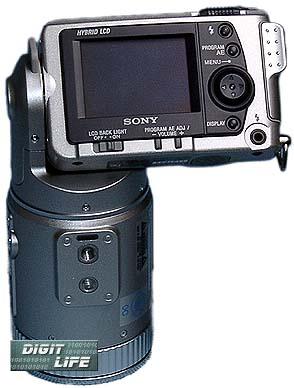 The camera is split into two distinctive sections, the lens barrel and the block that is actually a LC display. The base of the lens barrel is where a tripod mounts. Besides, the barrel is equipped with a build-in pop-up flash. I should notice that it's the first camera in my practice which is designed not only with a tripod socket but also with a special hole for for faster mounting to the tripod. Despite such unusual design many photographers who are dealing with long-focal-length optics used to a huge lens barrel in the left hand and a relatively small display attached to it. The lens system by Carl Zeiss is really offering long focal length - 7.1-35.5 mm (38 - 190 mm in 35 mm equivalent). Considering that it's equipped with M52 filter thread for color filters and other optical attachments, the focal length can be more extended. For example, on the photo you can see the camera with afocal telescopic attachment from Hama that increases the focal length by 1.5. 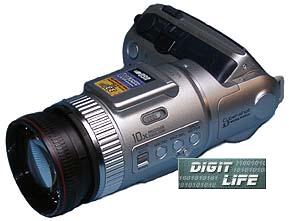 The lens has a focus ring. It doesn't move objective lens directly as it's just an electric switch. It's the most convenient focusing I've ever seen in digital cameras, especially considering that with manual focus adjustment an image grows and you can see the distance in meters.  the whole frame 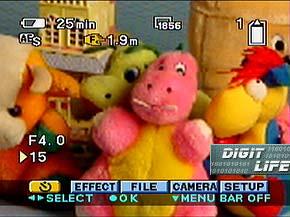 a part of the frame seen when rotating the focus ring A bit in depth on a Hybrid LC display. Since it lacks for an optical viewfinder, it's the only way to adjust sharpness and obtain information on the camera working modes. The camera is equipped with a switch for a backlight. Thus yo can use both external backlight and light behind the screen. Possibility to use external backlight makes this type of the displays the most convenient when in the bright sunlight. There everything is not so smooth, though. On the photo the screen is lit with a 500 W lamp and a part of the screen is shaded. With the rear light off you will perfectly see an image on the alight part of the screen and practically nothing on the shaded. With the backlight on it gets vice versa. 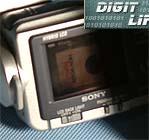 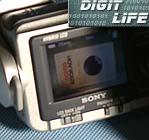 Navigation on onscreen menus is traditional for Sony; you can shoot with either exposure priority or with aperture priority, and make exposure adjustment. Besides, there you can find a lot of trick effects. 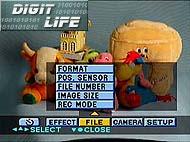   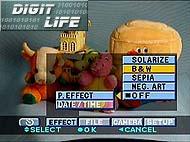   By the way, you may record clips with sound. 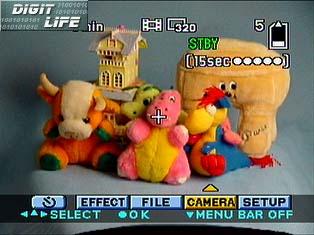 Playback menu is rather traditional. 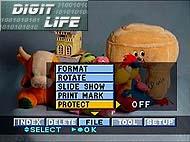  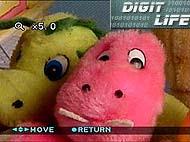 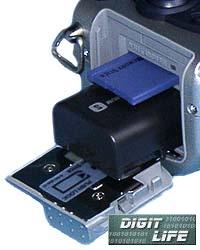 The camera is supplied with proprietary rechargeable battery Sony InfoLithium NP-FS11 and a charger which also doubles as an AC adapter. The power supply unit connects to the camera by a rather exotic way for video cameras, though quite usual for Sony devices: the battery is inserted in the battery compartment with the cable going through a door's slit to the supply unit.  TestsSensitivity is set automatically
in the range 100-300 ISO. Sensitivity values you have shot at can
be read in the header of the file EXIF JPEG. The table shows exposure
and aperture values at ISO 100 in comparison to the camera Canon
EOS 50.
Resolution. Carl Zeiss have made a legacy good lens. No noticeable dependence of resolution on focal length. On the photo you can see superposed resolution charts shot at 7,1 and 35,5 mm focal length. For better distinction we enlarged the image two times. So, the maximum resolution per frame amounts 1300 vertical grooves and 975 horizontal grooves. (black + white groove = 2 grooves) 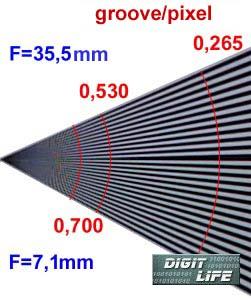 No significant dependence of the resolution on the channel. 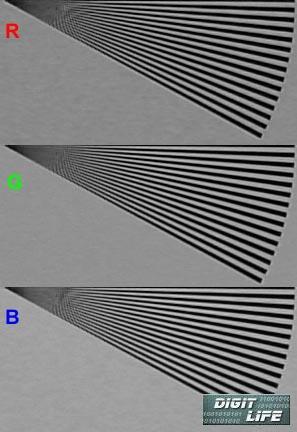 The tests revealed perfect quality of the lens in the whole range of the focal length, and as for spectral characteristics of the matrix, it seems that they do not differ from the received in the tests of the camera S70.  As an example we demonstrate a shot of the spectrum obtained with the diffraction grating from a halogen lamp. The shot was made at near maximum matrix sensitivity ISO = 282. The exposure was 1/30 s, the aperture made 1:2,8, the white balance is set for daylight. In such conditions matrix's "noise" is noticeable quite well. Technical characteristics
Photo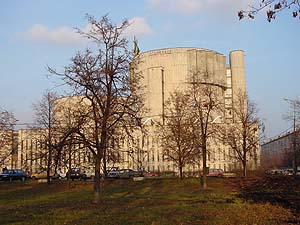 Miniature of the whole frame 1228 KBytes in size 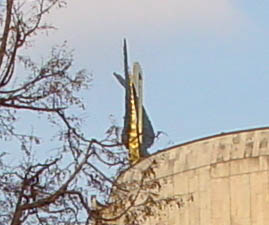 Fragment The camera can also be used as a camera gun to shoot crows: 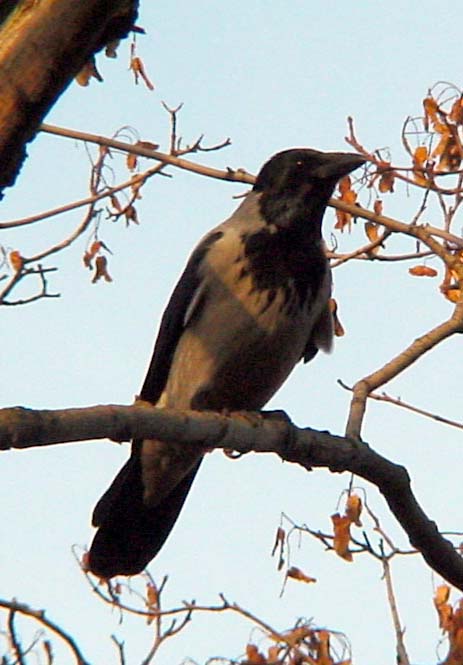 ConclusionA convenient camera for those who want a large ranged focal length and possibility to work with a LCD in the bright sunlight. In spite of the fact that a part of matrix effective area is lost, the camera appeared in proper time to become competitive amongst cameras with 5x zoom. The only it lacks for is possibility to set manually exposure and aperture at the same time. Write a comment below. No registration needed!
|
Platform · Video · Multimedia · Mobile · Other || About us & Privacy policy · Twitter · Facebook Copyright © Byrds Research & Publishing, Ltd., 1997–2011. All rights reserved. |